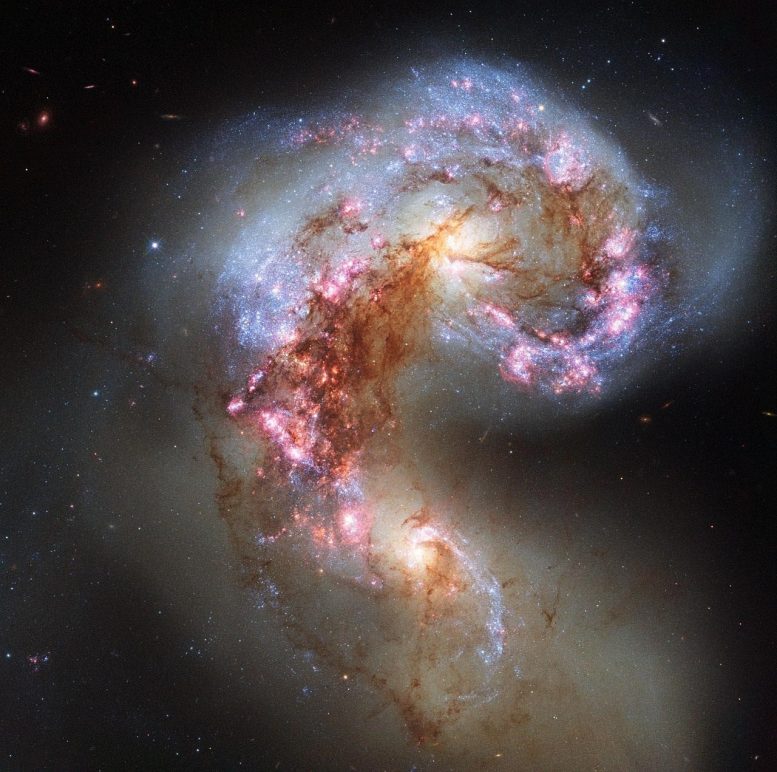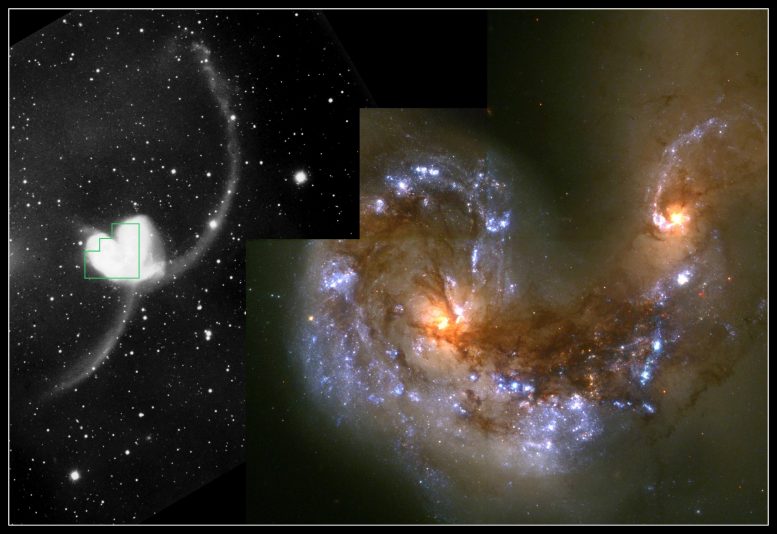This video zooms through the nighttime sky into the constellation Corvus, then deeper into Hubble’s view of the Antennae galaxies. Brilliant blue star clusters, born in the collision, pepper the galaxies. Pinkish, glowing hydrogen gas surround star-birth regions glowing under the intense energy from newborn stars. Credit: NASA, ESA and G. Bacon (STScI); Acknowledgment: NASA, ESA, A. Fujii, Digitized Sky Survey (DSS), STScI/AURA, Palomar/Caltech, UKSTU/AAO, B. Twardy/A. Block/NOAO/AURA/NSF, M. Kornmesser (ESA/Hubble), B. Whitmore (STScI) and the Hubble Heritage (STScI/AURA)-ESA/Hubble Collaboration Hubble has targeted the Antennae galaxies multiple times over the years. Signs of chaos are obvious in this image released in 2013, which combines ultraviolet, visible and infrared observations from Hubble’s Wide Field Camera 3 along with some previous observations from the Advanced Camera for Surveys. Blossoming clouds of pink and red gas cradle flashes of blue where new stars have just formed. Dark streaks of dust, pulled from the individual galaxies, sweep through and obscure vast parts of the scene. Hubble’s observations have uncovered over a thousand bright, young star clusters bursting to life as a result of the head-on wreck. The sweeping spiral-like patterns, traced by these bright blue star clusters, show the result of a firestorm of star birth activity triggered by the collision. The extraordinary rate of star formation in the Antennae galaxies is known as a starburst, a period in which all of the gas within the galaxies is being used to form stars. Eventually, this stellar inferno will burn itself out and the galaxies will settle down. The galactic cores will coalesce, and the once-separate galaxies will merge into one large elliptical galaxy. The Antennae galaxies were discovered by astronomer William Herschel in 1785. They are located about 65 million light-years away in the Corvus constellation, best seen in autumn skies in the Southern Hemisphere but also visible in the springtime from the Northern Hemisphere. The galaxies have magnitudes of approximately 10.5 and 11, so a moderate to large telescope and dark skies are needed for optimal viewing. Even with a large telescope the Antennae galaxies will most likely resemble a faint, hazy comma.

